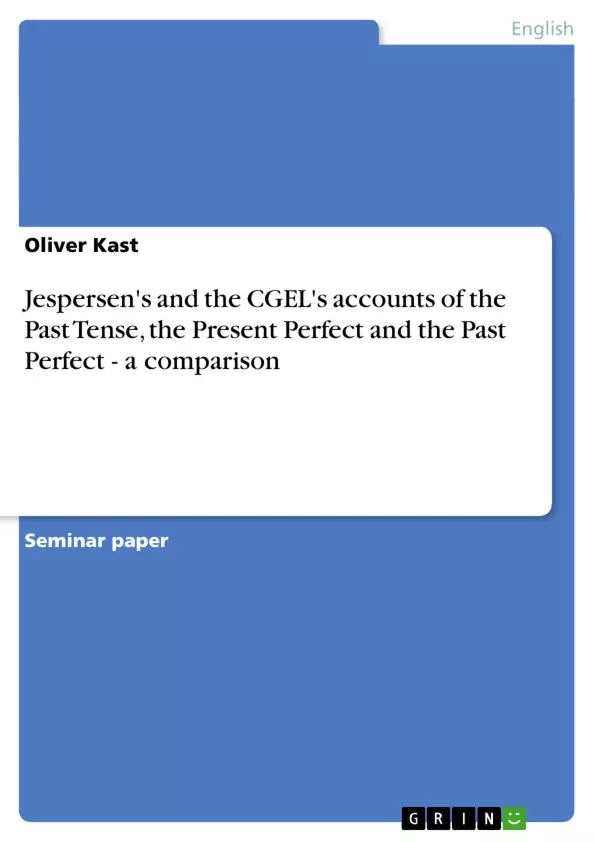In general, Jespersen, unlike the CGEL, doesn’t explain the use of the following tenses as one would expect from a standard grammar (the CGEL clearly explains the meanings and the use of the three tenses in question by clarifying these aspects by means of easily comprehensible examples), but relates the Present Perfect, the Past Tense and the Past Perfect to each other and gives various quotations for each aspect he deals with. Therefore, it may sometimes be a bit confusing to comprehend every detail of Jespersen’s way of argumentation.
Inhaltsverzeichnis (Table of Contents)
- Introduction
- Definition of the Present Perfect
- Relations between the Present Tense and the Present Perfect
- Relations between the Present Perfect and the Past Tense
- Various Subjuncts
- Time not expressly indicated
- Past Tense for Before-Past
- The Perfect
- Perfect for Before-Future
- Tenses with, since'
- The Past Perfect
- Imaginative use of Tenses
- Back-Shifting
Zielsetzung und Themenschwerpunkte (Objectives and Key Themes)
This paper compares and contrasts the accounts of the past tense, present perfect, and past perfect provided by Otto Jespersen and the Cambridge Grammar of the English Language (CGEL). It explores the differences in their approaches to defining and analyzing these tenses, highlighting Jespersen’s reliance on examples and quotations compared to the CGEL’s more systematic and explicit explanations.
- Defining the Present Perfect and its relation to the present tense
- Analyzing the connection between the present perfect and the past tense
- Examining the use of subjuncts and their impact on tense selection
- Exploring Jespersen’s concept of inclusive time
- Contrasting the views of Jespersen and the CGEL on the nature of tense and aspect
Zusammenfassung der Kapitel (Chapter Summaries)
The paper begins with an introduction that sets the stage for the comparison between Jespersen's approach and the CGEL. It then moves on to define the present perfect, highlighting Jespersen's view of it as a kind of present tense, and contrasting it with the CGEL's definition as a perfective aspect.
Chapter 3 explores the relationship between the present tense and the present perfect, considering Jespersen's examples of "have got" and "is dead/has died." It also introduces the concept of inclusive time as used by Jespersen.
Chapter 4 delves into the complex relations between the present perfect and the past tense, analyzing the role of subjuncts and time indicators in tense selection. The chapter also compares and contrasts the views of Jespersen and the CGEL on this topic.
Schlüsselwörter (Keywords)
The main keywords and focus topics of the text are the English present perfect, past tense, past perfect, tense, aspect, Otto Jespersen, Cambridge Grammar of the English Language (CGEL), time subjuncts, inclusive time, and grammatical analysis.
- Citar trabajo
- Oliver Kast (Autor), 2000, Jespersen's and the CGEL's accounts of the Past Tense, the Present Perfect and the Past Perfect - a comparison, Múnich, GRIN Verlag, https://www.grin.com/document/14315



